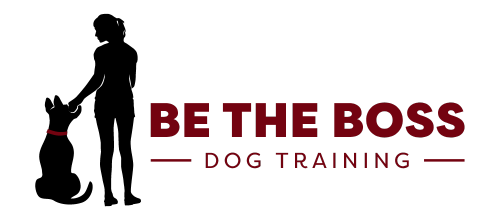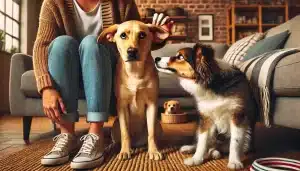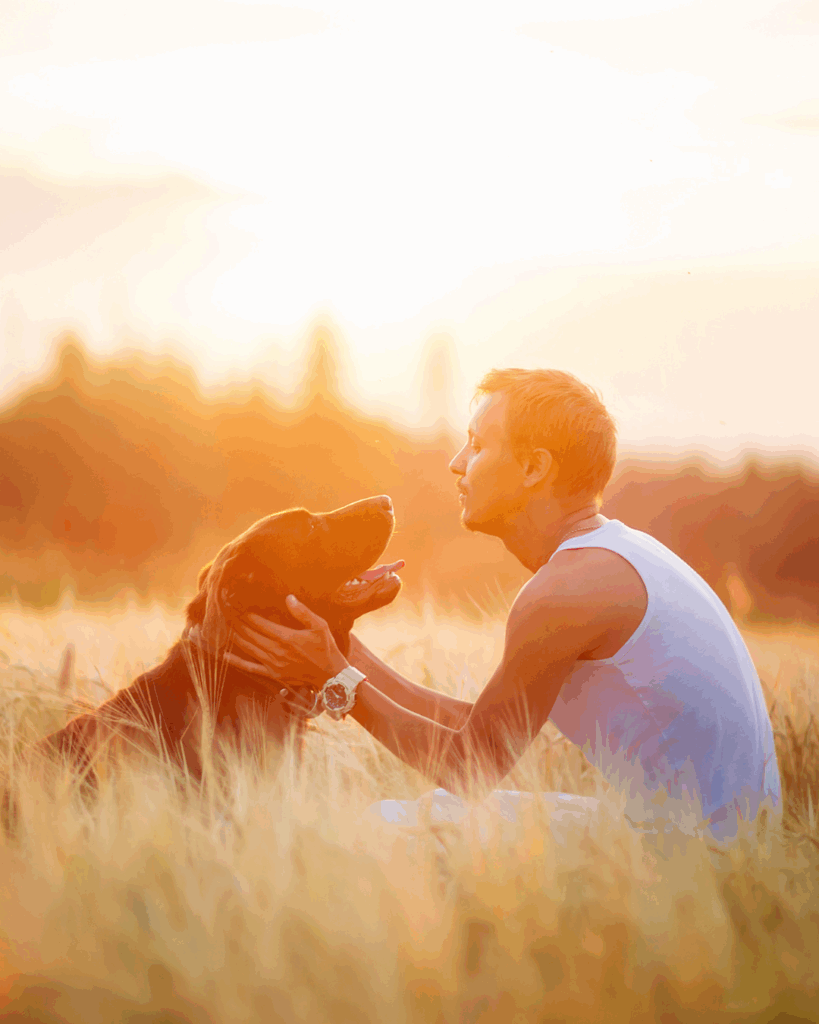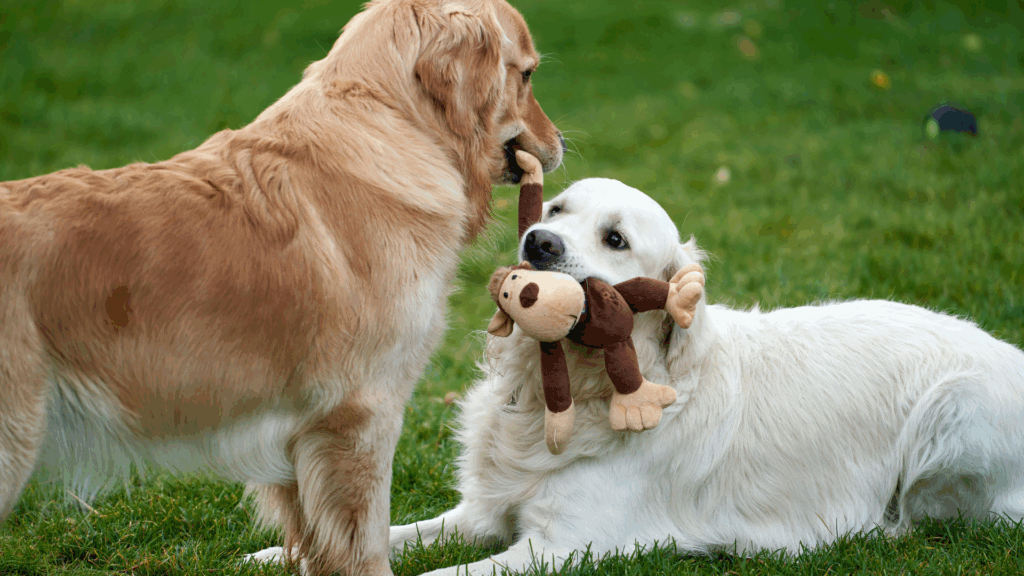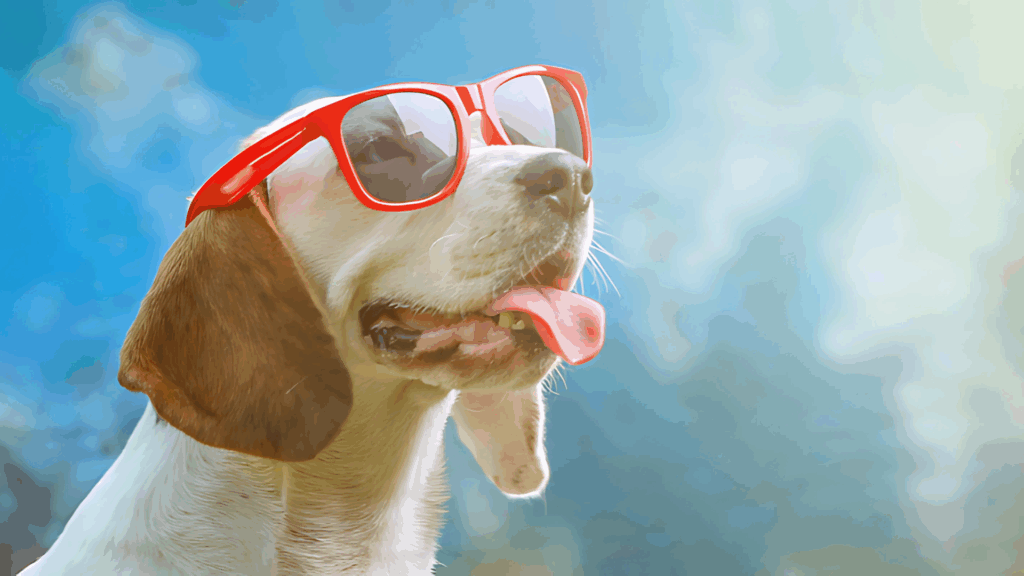You’ve seen it, haven’t you? That moment when you’re giving one of your dogs some attention, and the other one suddenly appears, pushing its way in, demanding its own share of your love. Maybe you’ve laughed it off, calling it “cute” or “silly,” assuming that your dog is merely vying for your attention because it loves you so much. But is that really the whole story?
The truth might be more complex—and perhaps more unsettling—than what most dog owners want to believe. When we assume our dogs’ behaviors are all driven by simple, benign emotions, we risk overlooking a more nuanced reality: dogs can, and do, experience jealousy. And ignoring this can lead to serious problems in multi-dog households.
Let’s be clear: the idea that dogs get jealous isn’t just about their need to be the center of attention. It’s about their survival, their instinct, and their sense of belonging in the pack—whether that pack is made up of other dogs or humans. If you’re not recognizing this jealousy for what it is, you’re not only misunderstanding your dogs, but you might also be setting the stage for conflict, tension, and even aggression.

Understanding Dog Emotions: Not Just “Cute”
Before diving into the jealousy aspect, we need to lay the groundwork. Dogs are emotional creatures. They experience a range of feelings—from joy and excitement to anxiety and fear. This emotional spectrum isn’t something we should take lightly or anthropomorphize into human-like qualities, but it also shouldn’t be dismissed as merely instinctual behavior. Dogs have evolved alongside humans for thousands of years, and in doing so, they’ve developed emotional capacities that mirror, to some extent, our own.
To dismiss the idea that dogs can feel jealousy is to underestimate the complexity of their social behaviors and emotional responses. Studies have shown that dogs exhibit behaviors indicative of jealousy when their owners pay attention to other dogs, humans, or even objects. This is more than just a reaction to being left out; it’s a response rooted in survival and pack dynamics.

The Biological Basis of Jealousy
Jealousy in dogs isn’t an abstract concept. It has a biological basis. Dogs are pack animals, and in the wild, maintaining one’s position within the social hierarchy is crucial for survival. Resources—food, mates, shelter, and yes, attention—are often limited. In a pack setting, the alpha or lead dog controls access to these resources, and jealousy can play a role in establishing and maintaining social order.
In a multi-dog household, the owner represents a primary resource, and when one dog feels that this resource is threatened or that its access to it is being limited, jealousy can arise. This jealousy manifests in behaviors such as pushing between you and another dog, barking, growling, or even displaying aggression towards the other dog. These aren’t just random acts of naughtiness; they are deeply ingrained behaviors designed to protect the dog’s status and ensure its survival.

Real-Life Scenarios of Jealousy in Dogs
Let’s bring this concept down from the abstract into real-life scenarios. Imagine you’re sitting on the couch, petting one of your dogs. Your other dog, who was previously occupied, suddenly trots over and tries to insert itself between you and the dog you’re petting. If you continue to pet the first dog, the newcomer might start barking, whining, or even nipping at its housemate. You might dismiss this as your dog simply wanting attention, but this behavior can quickly escalate.
In multi-dog homes, these minor displays of jealousy can evolve into more significant issues, such as fights between dogs, resentment, and even behavioral problems that spill over into other aspects of life. Dogs that constantly feel the need to assert their access to you can develop anxiety and become possessive, leading to a host of other behavioral problems, including resource guarding, aggression, and separation anxiety.

Recognizing the Signs: Is Your Dog Jealous?
Recognizing jealousy in dogs isn’t always straightforward, as it can manifest in various ways. Here are some signs that may indicate your dog is experiencing jealousy:
- Aggression: This can be directed toward the other dog, other animals, or even you. Growling, barking, snapping, and biting are clear indicators of aggressive behavior born out of jealousy.
- Pushy Behavior: If your dog consistently tries to get between you and the other dog, nudging you for attention, or shoving the other dog out of the way, it’s showing classic signs of jealousy.
- Attention-Seeking Behavior: A jealous dog may display excessive attention-seeking behaviors, such as jumping on you, pawing at you, or barking incessantly to get your focus back on them.
- Anxiety and Stress: Jealousy can cause a dog to become anxious or stressed, leading to pacing, whining, or destructive behaviors when they feel excluded or threatened.
- Avoidance or Depression: In some cases, jealousy can make a dog feel defeated, leading them to withdraw from interactions and show signs of depression.

Managing Jealousy in Multi-Dog Homes
So, what can you do if you recognize these signs of jealousy in your multi-dog home? Here are some strategies that can help manage and mitigate jealousy among your dogs:
- Equal Attention: While it’s tempting to give more attention to the dog that’s demanding it, this can reinforce jealous behaviors. Make sure you’re providing equal amounts of attention, love, and care to all your dogs. Structured one-on-one time with each dog can help reinforce positive behaviors.
- Training and Boundaries: Establish clear boundaries and commands that all dogs must follow. Training each dog to understand commands like “stay,” “wait,” and “off” can prevent jealousy-driven behaviors from escalating. Consistent training reinforces the idea that resources, including your attention, are controlled and not up for competition.
- Positive Reinforcement: Reward good behavior with treats, affection, and praise. If a dog waits patiently while you’re giving attention to another, make sure to reward this behavior to encourage a calm, non-jealous response.
- Avoid Reinforcing Negative Behavior: It’s easy to inadvertently reinforce jealous behaviors by giving in to a demanding dog’s pushiness or aggression. Instead, calmly redirect the behavior and only provide attention when the dog is calm and not acting out of jealousy.
- Create Separate Spaces: If necessary, create separate spaces where each dog can retreat and feel secure. This can be a designated bed, crate, or room where they can have some alone time without feeling threatened by the presence of other dogs.
- Professional Help: If jealousy issues are leading to aggression or serious behavioral problems, seeking the help of a professional dog trainer or behaviorist can be crucial. They can provide tailored strategies and insights to help manage and reduce jealousy among your dogs.

Reflecting on the Human Role
At the heart of managing jealousy in dogs is the role of the human. You, as the leader of your pack, set the tone and the rules. Your awareness, consistency, and leadership are vital in managing your dogs’ emotions and ensuring harmony in your home. Understanding that dogs can and do experience complex emotions like jealousy is the first step in being a responsible and compassionate pet owner.
When you acknowledge the reality of dog emotions, you’re not just enhancing your relationship with your dogs—you’re also promoting a healthier, happier, and more balanced environment for everyone in your home. Don’t dismiss your dog’s jealousy as mere attention-seeking or a sign of bad behavior. Recognize it for what it is: a reflection of their social needs, instincts, and emotional complexity. Only then can you address it effectively, ensuring that your multi-dog household remains a place of peace and love rather than conflict and competition.
